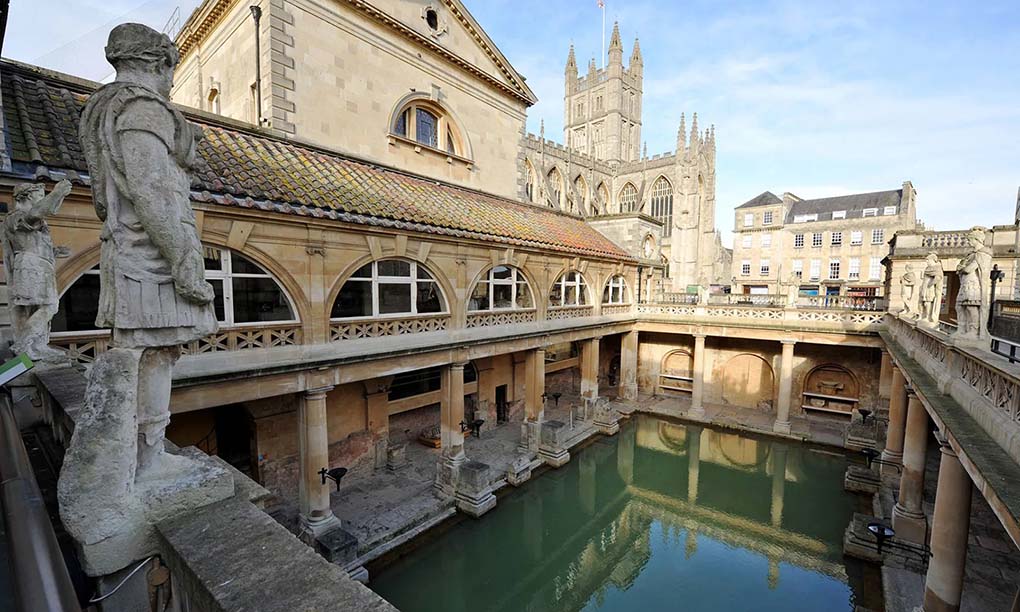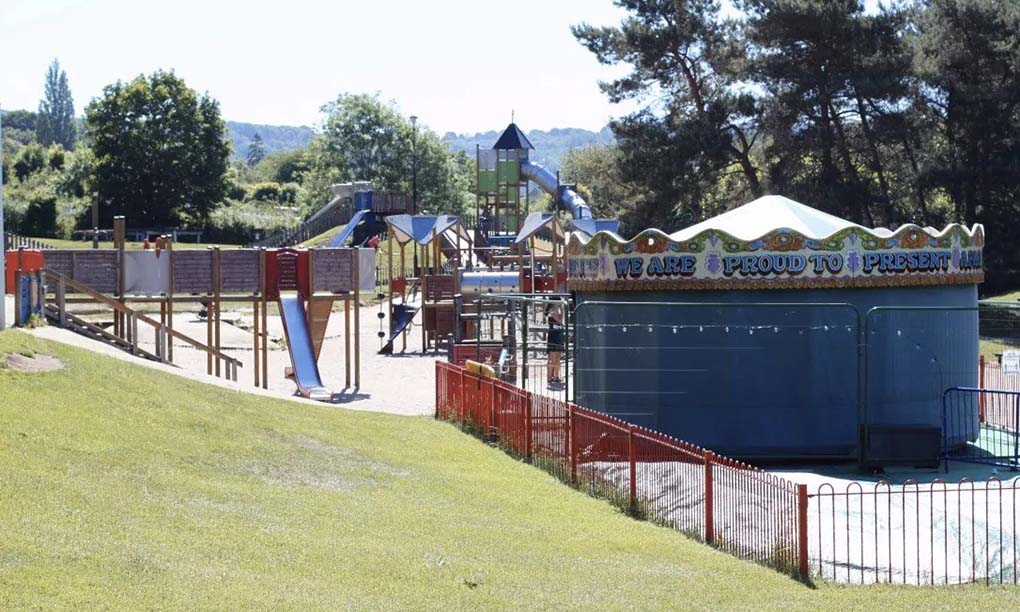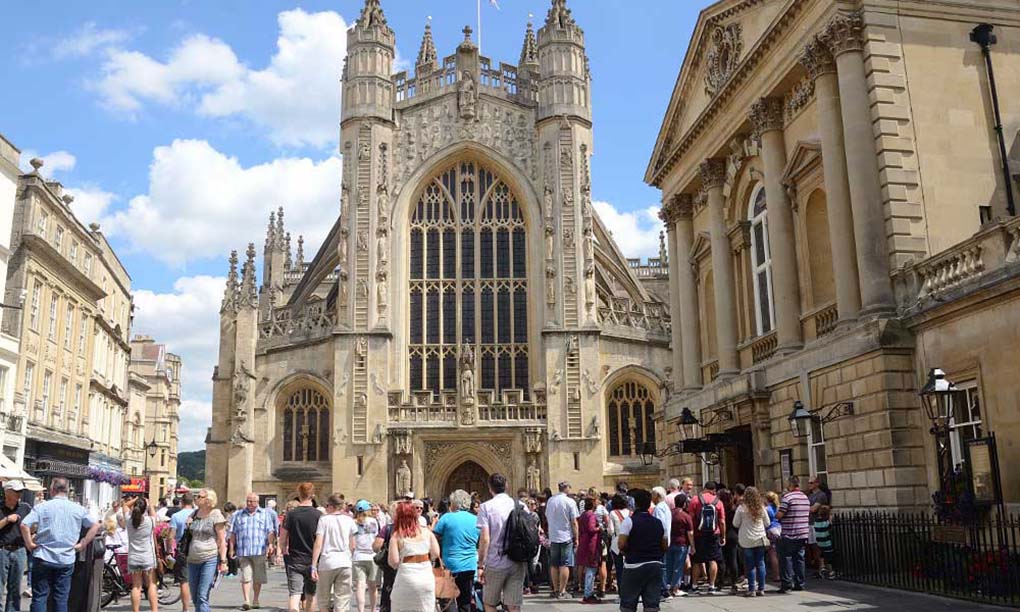Bath, a city in Somerset, England, is a gem of Georgian architecture and Roman history, known for its stunning landscapes, thermal waters, and historic landmarks. Whether you’re drawn to its ancient Roman baths, its magnificent Georgian buildings, or its vibrant cultural scene, Bath offers something for everyone.
The Royal Crescent: A Georgian Masterpiece
The Royal Crescent is one of Bath’s most recognizable and iconic landmarks. Designed by architect John Wood the Younger, this sweeping crescent of 30 terraced houses, constructed between 1767 and 1774, epitomizes Georgian elegance and architectural grandeur. The crescent’s design reflects the ideal of harmony and balance, showcasing Bath’s reputation as a center of sophisticated urban design in the 18th century.
What to See:
- Architecture: The Royal Crescent is renowned for its Palladian architecture and uniformity. The terraces are characterized by their large, symmetrical facades, elegantly curved rows, and stunning Georgian proportions. The consistency in architectural style offers a visual feast for those interested in design and history.
- No. 1 Royal Crescent: This museum, located at the end of the crescent, offers a fascinating glimpse into Georgian life. The museum is meticulously restored to reflect the opulence and style of the period, providing an immersive experience into the daily lives of the wealthy during Bath’s Georgian heyday.
How to Get There:
Located in the heart of Bath, the Royal Crescent is easily accessible on foot from most central locations. If you’re coming by car, parking is available in nearby areas, but it’s recommended to use public transport or walk if possible due to limited parking.
Recommended Time to Visit:
A visit to the Royal Crescent is enjoyable year-round. However, early morning or late afternoon can provide softer lighting for photography and fewer crowds, making for a more peaceful experience.
The Roman Baths: A Journey Back in Time
The Roman Baths are one of Bath’s most famous and historically significant attractions. This ancient bathing complex, built around the natural hot springs that have been used since Roman times, provides a fascinating insight into the bathing culture of ancient Rome. The site includes the original bathhouse, temple, and various artifacts from the Roman period.

What to See:
- The Great Bath: The centerpiece of the Roman Baths, the Great Bath is a large, rectangular pool filled with naturally heated mineral water. The sight of the steaming waters surrounded by ancient stone columns is both impressive and atmospheric.
- The Temple Precinct: Explore the remains of the Roman temple dedicated to the goddess Sulis Minerva. The temple’s foundation and some of its original carvings are on display, giving a sense of the grandeur of the original structure.
- The Museum: The on-site museum houses a vast collection of Roman artifacts, including coins, jewelry, and inscriptions. It provides a broader context for the Roman Baths and offers a glimpse into the daily lives of those who frequented the site.
How to Get There:
Located in the center of Bath, the Roman Baths are easily accessible on foot. They are well-signposted from Bath Spa train station and other major landmarks in the city.
Recommended Time to Visit:
The Roman Baths are a must-see attraction, and it’s advisable to book tickets in advance, especially during peak tourist seasons. Early morning or late afternoon visits can help avoid the busiest times.
Bath Abbey: A Gothic Jewel
Bath Abbey is a magnificent example of Gothic architecture and a central feature of Bath’s skyline. Built on the site of a former Anglo-Saxon church, the current Abbey was constructed between 1499 and 1616 and stands as a testament to the city’s rich religious and architectural heritage.
What to See:
- The Nave and Choir: The Abbey’s interior is adorned with stunning stained glass windows, intricate stonework, and soaring arches. The nave and choir are particularly impressive, showcasing the grandeur of Gothic design.
- The Tower: Climb the 212 steps to the top of Bath Abbey’s tower for panoramic views of the city and the surrounding countryside. The climb is a bit challenging, but the views are well worth the effort.
- The Memorials: Bath Abbey is home to numerous memorials and tombs, including those of notable figures such as Admiral Nelson and the poet Samuel Taylor Coleridge. These memorials add historical depth to the Abbey’s interior.
How to Get There:
Bath Abbey is centrally located and easily reachable from other major attractions. It’s a short walk from the Roman Baths and the Royal Crescent. If you’re using public transport, it’s a convenient stop on most city routes.
Recommended Time to Visit:
The Abbey is open throughout the day, with quieter times generally in the early morning and late afternoon. Checking the Abbey’s schedule for services and events is also a good idea to avoid peak times.
Pulteney Bridge: A Beautiful Architectural Feat
Pulteney Bridge is one of Bath’s most picturesque landmarks, known for its striking design and scenic location. Designed by Robert Adam and completed in 1774, the bridge spans the River Avon and is unique for its shops that line both sides of the bridge.

What to See:
- The Bridge’s Architecture: Pulteney Bridge is notable for its Palladian style and the continuous line of shops across its span. The bridge’s design and the way it integrates with the surrounding landscape make it a favorite subject for photographers.
- Views of the Weir: From the bridge, you can enjoy views of the weir on the River Avon. The cascading water creates a beautiful contrast with the historical architecture.
How to Get There:
Pulteney Bridge is centrally located and easily accessible by foot from other major attractions in Bath. It’s a short walk from the Roman Baths and Bath Abbey.
Recommended Time to Visit:
The bridge is a delightful spot to visit at any time of day, but the best light for photographs is often in the early morning or late afternoon. It’s also worth seeing the bridge lit up at night for a different perspective.
The Jane Austen Centre: A Literary Exploration
The Jane Austen Centre celebrates the life and works of one of Bath’s most famous residents. Jane Austen lived in Bath from 1801 to 1806, and the city features prominently in her novels. The Centre offers insights into her life, her literature, and the Regency period.
What to See:
- Exhibits: The Centre’s exhibits include displays on Jane Austen’s life, her novels, and the Regency era. You can learn about her time in Bath and how the city influenced her writing.
- Costumed Guides: The Centre features costumed guides who provide interactive and engaging tours, offering a unique perspective on Austen’s world.
- Gift Shop: The on-site shop offers a range of Austen-themed gifts, books, and souvenirs, perfect for fans of the author.
How to Get There:
The Jane Austen Centre is located on Gay Street, a short walk from the Royal Crescent and other central attractions. It’s easily accessible on foot from most parts of the city.
Recommended Time to Visit:
The Centre is open daily, and early morning visits tend to be quieter. It’s a great destination for fans of Jane Austen or anyone interested in Regency history.
Victoria Park: A Tranquil Escape
Victoria Park is a spacious and serene green space, offering a peaceful retreat from the hustle and bustle of the city. The park features beautifully landscaped gardens, open lawns, and a variety of recreational facilities.

What to See:
- The Bandstand: The park’s bandstand is a charming feature, often used for musical performances and events. It provides a lovely backdrop for photos and adds to the park’s nostalgic atmosphere.
- The Pavilion: A traditional pavilion houses a café and offers refreshments and a place to relax while enjoying the park’s views.
- The Gardens: The well-maintained gardens feature a variety of seasonal flowers and plants, making for pleasant strolls and picturesque scenes.
How to Get There:
Victoria Park is within walking distance from the city center. It’s accessible via several pedestrian routes and is well-signposted.
Recommended Time to Visit:
The park is ideal for a leisurely stroll or a picnic. It’s particularly lovely during the spring and summer months when the gardens are in full bloom.
Exploring Bath’s Rich Heritage
Bath is a city steeped in history, culture, and architectural splendor. From the stunning Georgian crescents to the ancient Roman Baths, each attraction offers a unique glimpse into the city’s past and present. Whether you’re exploring the architectural marvels, delving into literary history, or simply enjoying the serene parks, Bath promises a memorable and enriching experience.
Tags: Bath’s Rich Heritage, Bath’s Top Attractions, Travel to Bath